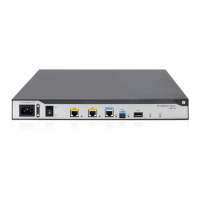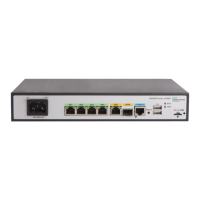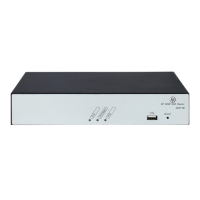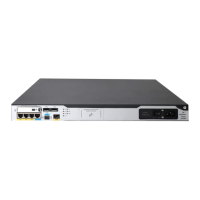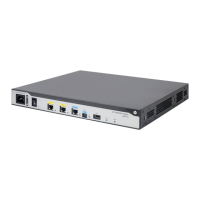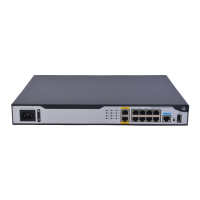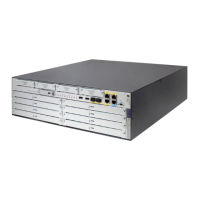48
To configure the maximum number of PPPoE sessions:
Ste
Command
Remarks
1. Enter system view.
system-view N/A
2. Enter Layer 3 Ethernet
interface/subinterface, Layer
3 virtual Ethernet
interface/subinterface, Layer
3 aggregate
interface/subinterface,
VE-L3VPN
interface/subinterface, or
EFM interface/subinterface
view.
interface interface-type
interface-number
The PPPoE server is enabled on the
interface.
3. Set the maximum number of
PPPoE sessions on an
interface.
pppoe-server session-limit number
By default, the number of PPPoE
sessions on an interface is not
limited.
4. Set the maximum number of
PPPoE sessions for a user on
an interface.
pppoe-server session-limit per-mac
number
By default, a user is allowed to
create a maximum of 100 PPPoE
sessions.
5. Return to system view.
quit N/A
6. Set the maximum number of
PPPoE sessions on a device
(centralized devices in
standalone mode).
pppoe-server session-limit total
number
By default, the number of PPPoE
sessions on a device is not limited.
7. Set the maximum number of
PPPoE sessions on the
specified card (distributed
devices in standalone mode).
pppoe-server session-limit slot
slot-number total number
By default, the number of PPPoE
sessions on a card is not limited.
8. Set the maximum number of
PPPoE sessions on an IRF
member device (centralized
devices in IRF mode).
pppoe-server session-limit slot
slot-number total number
By default, the number of PPPoE
sessions on an IRF member device
is not limited.
9. Set the maximum number of
PPPoE sessions on a card of an
IRF member device
(distributed devices in IRF
mode).
pppoe-server session-limit chassis
chassis-number slot slot-number
total number
By default, the number of PPPoE
sessions on a card is not limited.
Limiting the PPPoE access rate
The device can limit the rate at which a user (identified by an MAC address) can create PPPoE sessions
on an interface. If the number of PPPoE requests within the monitoring time exceeds the configured
threshold, the device discards the excessive requests, and outputs log messages. If the blocking time is set
to 0, the device does not block any requests, and it only outputs log messages.
The device uses a monitoring table and a blocking table to control PPP access rates:
• Monitoring table—Stores a maximum of 8000 monitoring entries. Each entry records the number of
PPPoE sessions created by a user within the monitoring time. When the monitoring entries reach the
maximum, the system stops monitoring and blocking session requests from new users. The aging
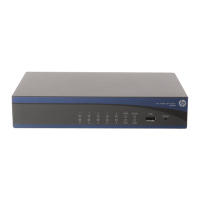
